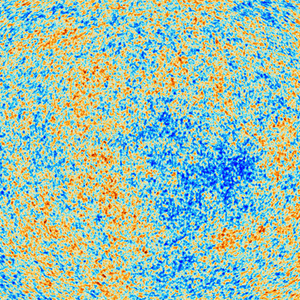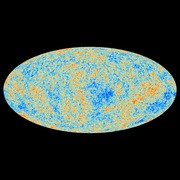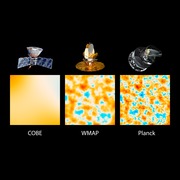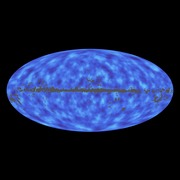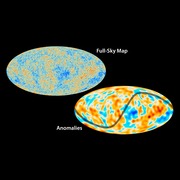About the Image
- Date
- March 21, 2013
- ID
- planck13-001f
- Type
- Chart
- Credit
- ESA and the Planck Collaboration
The Universe, Summed Up in a Squiggly Line
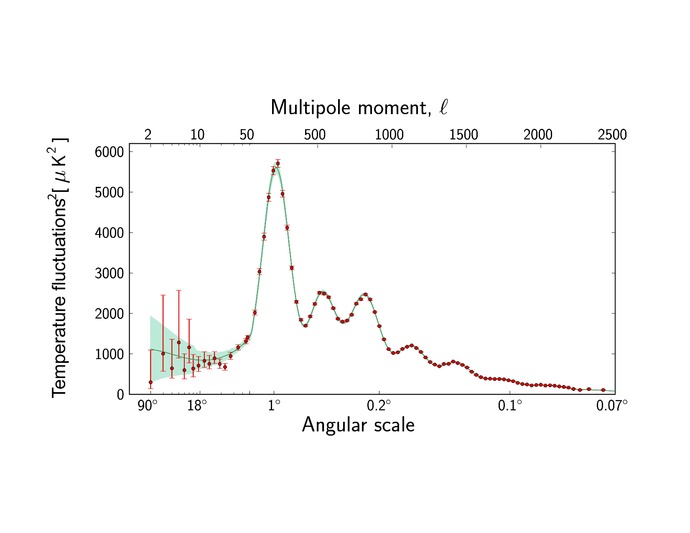
This graph shows the temperature differences in the oldest light in the universe, called the cosmic microwave background, detected by Planck at different distances apart on the sky. The curve is known as the power spectrum. The largest distances, or angular scales, starting at angles of 90 degrees, are shown on the left side of the graph, whereas smaller and smaller scales are shown toward the right. For comparison, the diameter of the full moon in our sky measures about half a degree.
Planck was able to capture the region between 0.5 and .05 degrees with far greater precision than its predecessors, revealing new information about basic traits of our universe.
The red dots correspond to measurements made with Planck; these are shown with error bars that account for measurement errors as well as for estimated uncertainties due to the limited number of points in the sky where it is possible to perform measurements. This so-called cosmic variance is an unavoidable effect that becomes most significant at larger angular scales.
The green curve shown in the graph represents the best fit of the "standard model of cosmology" -- currently the most widely accepted scenario for the origin and evolution of the universe -- to the Planck data. The pale green area around the curve shows the predictions of all the variations of the standard model that best agree with the data.
While the observations on small and intermediate angular scales agree extremely well with the model predictions, the fluctuations detected on large angular scales on the sky -- between 90 and six degrees -- are about 10 percent weaker than the best fit of the standard model to Planck data. At angular scales larger than six degrees, there is one data point that falls well outside the range of allowed models. These anomalies suggest that some aspects of the standard model of cosmology may need rethinking.
Planck is a European Space Agency mission, with significant participation from NASA. NASA's Planck Project Office is based at NASA's Jet Propulsion Laboratory, Pasadena, Calif. JPL contributed mission-enabling technology for both of Planck's science instruments. European, Canadian and U.S. Planck scientists work together to analyze the Planck data.

